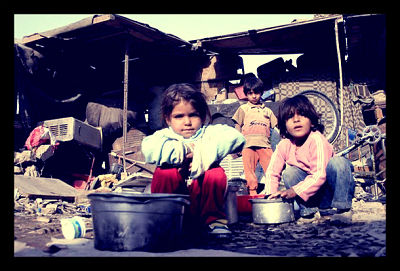Poverty in Iraq

Poverty in Iraq? Many countries in the Middle East are dominated by oil production and exporting, and Iraq is no different. 95% of its exports are from oil. Like other resource-rich countries, however, this abundance of profit potential has not translated to a higher standard of living for the average Iraqi citizen. Furthermore, economic progress and social development has been hindered by ethnosectarian violence, severe setbacks in infrastructure, and poor educational quality. A number of complex challenges face Iraq today.
3 Main Causes of Poverty in Iraq
- Social and political instability by civil war. The occupation of Iraqi territory beginning in 2003 removed some of the barriers to outright sectarian violence by the institution of democracy. Iraq has traditionally been separated into three regions associated with people groups who took residency within: Kurds (15% of the population) in the north, Shia Arabs (45-55%) in the south, and Sunni Arabs (30%) in the region in between and to the west. Tens of thousands of Iraqis died in the five years following the invasion of Iraq, but sectarian violence — usually in the form of terrorist attacks — persists today. Not only has this endangered Iraqi civilians to the extent of displacing up to 2.2 million people since 2003, but it also makes trade and business incredibly dangerous. The simple act of moving goods about the country is disrupted by armed violence.
- Degradation and destruction of infrastructure. Both the ongoing civil war and the invasion of 2003 significantly damaged communication and transportation means. While the International Reconstruction Fund for Iraq asserts that Iraq’s infrastructure was among the best in the Middle East before the 1990s, today for most Iraqis there is limited access to electricity, sanitation, and clean water supply. An Oxfam briefing from 2007 reported that most homes in Baghdad and major cities receive only two hours of electricity per day. Furthermore, where there may be working roads and aid to be given, armed groups and Iraqi security forces may abruptly surround an area during military operations: “Sudden changes in access to towns and cities … pose major constraints on NGOs’ ability to deliver a humanitarian response.”
- Destabilized education system. Like infrastructure, the education system in Iraq was an example to other countries in the region before 1990s. However, with the displacement that followed the invasion, the state of education administration suffered. According to Oxfam, 92% of children surveyed had learning impediments “largely attributable to the current climate of fear.” Save the Children UK reported that over 800,000 children were not in school, an increase of 200,000 students in 2004. Displacement not only removed much-needed teachers from schools, but also brought large amounts of internally displaced refugees to seek shelter in school facilities in some communities. While the regime change has sparked an overhaul in curriculum and gender equality, the accompanying instability has undermined those improvements.
The situation in Iraq has been discussed by a number of NGOs, focusing on reform of programs already in place. For example, the Public Distribution System (PDS) is a universal ration program, but its main obstacle lies in targeting and distribution. It does not effectively target those who are at greatest risk for slipping into absolute poverty. A number of reports assert that if the Iraqi government used funds available to it from oil exports, these difficulties could be addressed. However, until ethnosectarian violence can be resolved and security restored, steps forward will be accompanied by backward steps as well.
– Naomi Doraisamy
Source: CIA World Factbook, Library of Congress, Oxfam/NCCI, World Bank,
Photo: AlTahreer News
